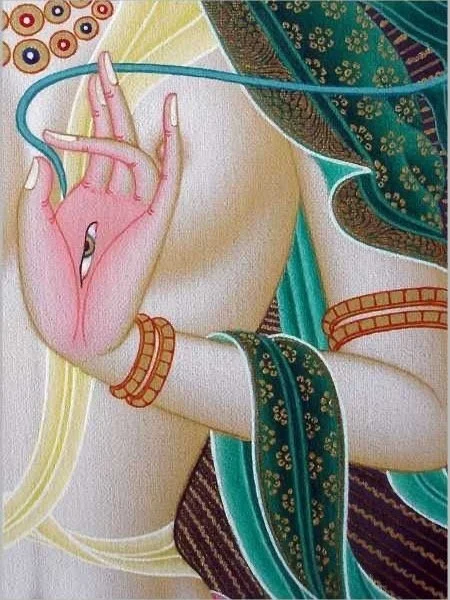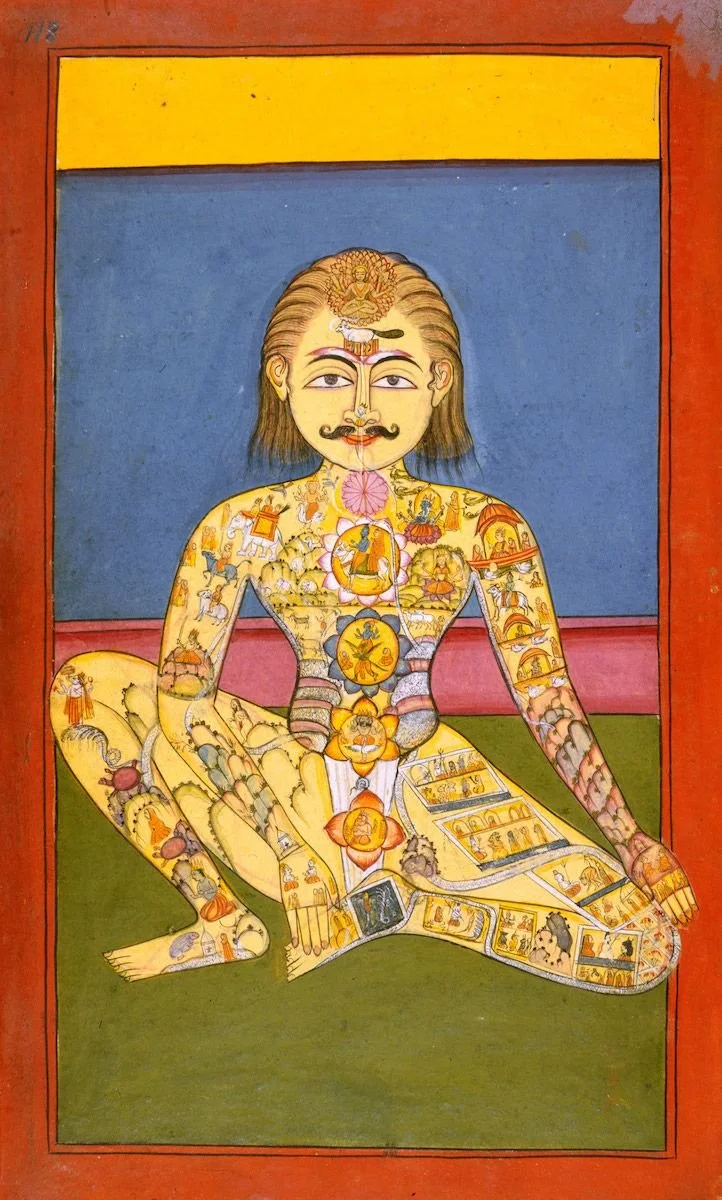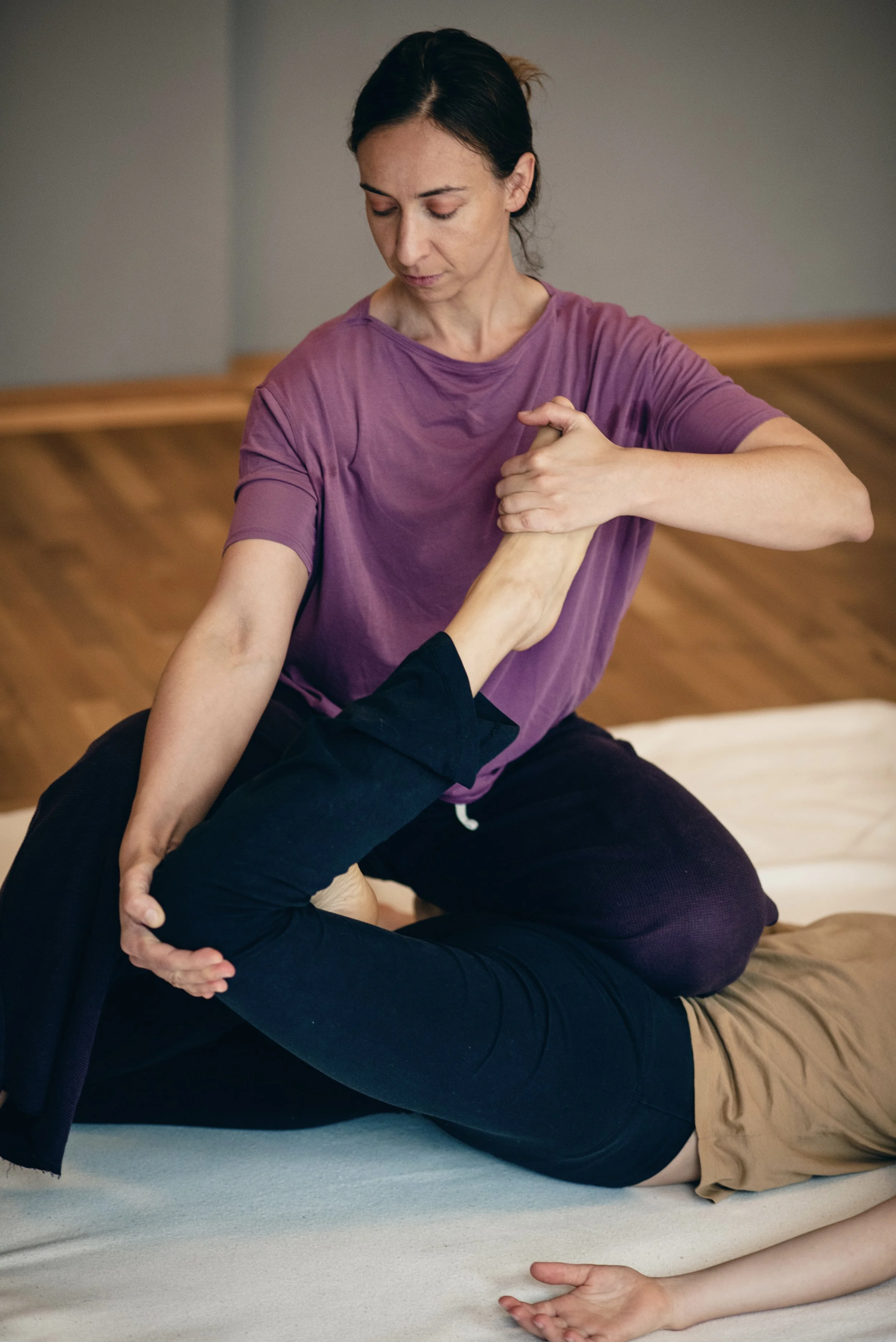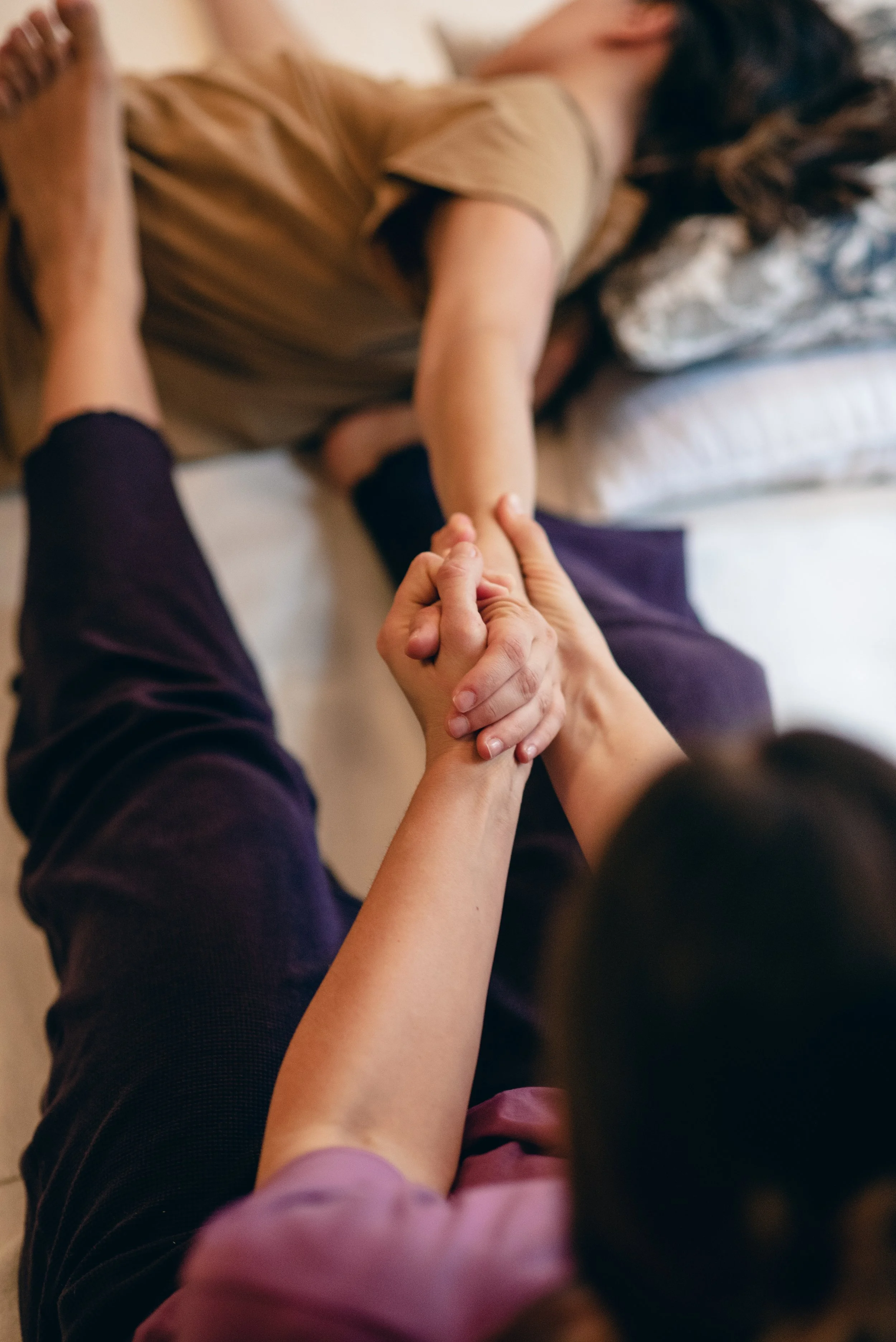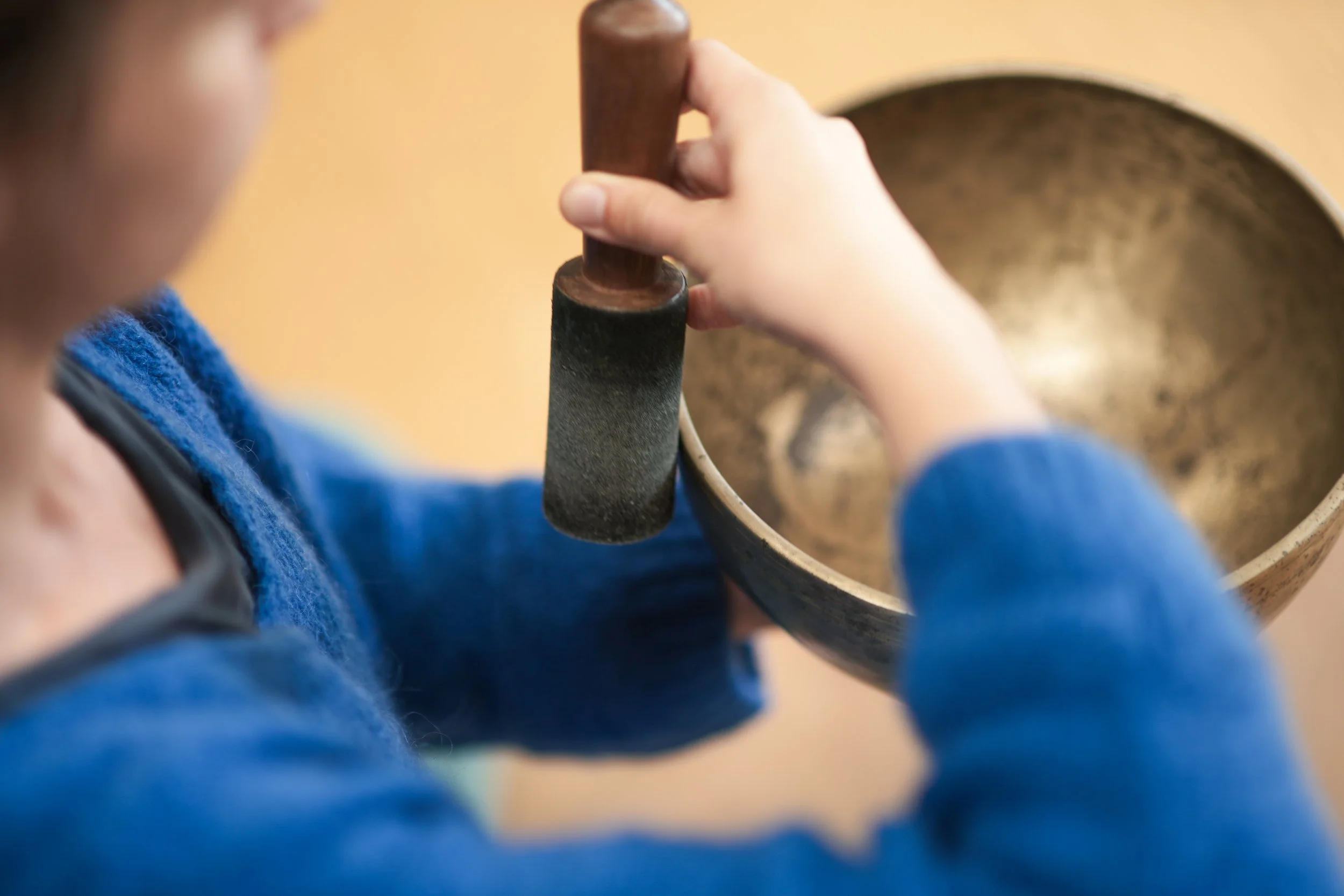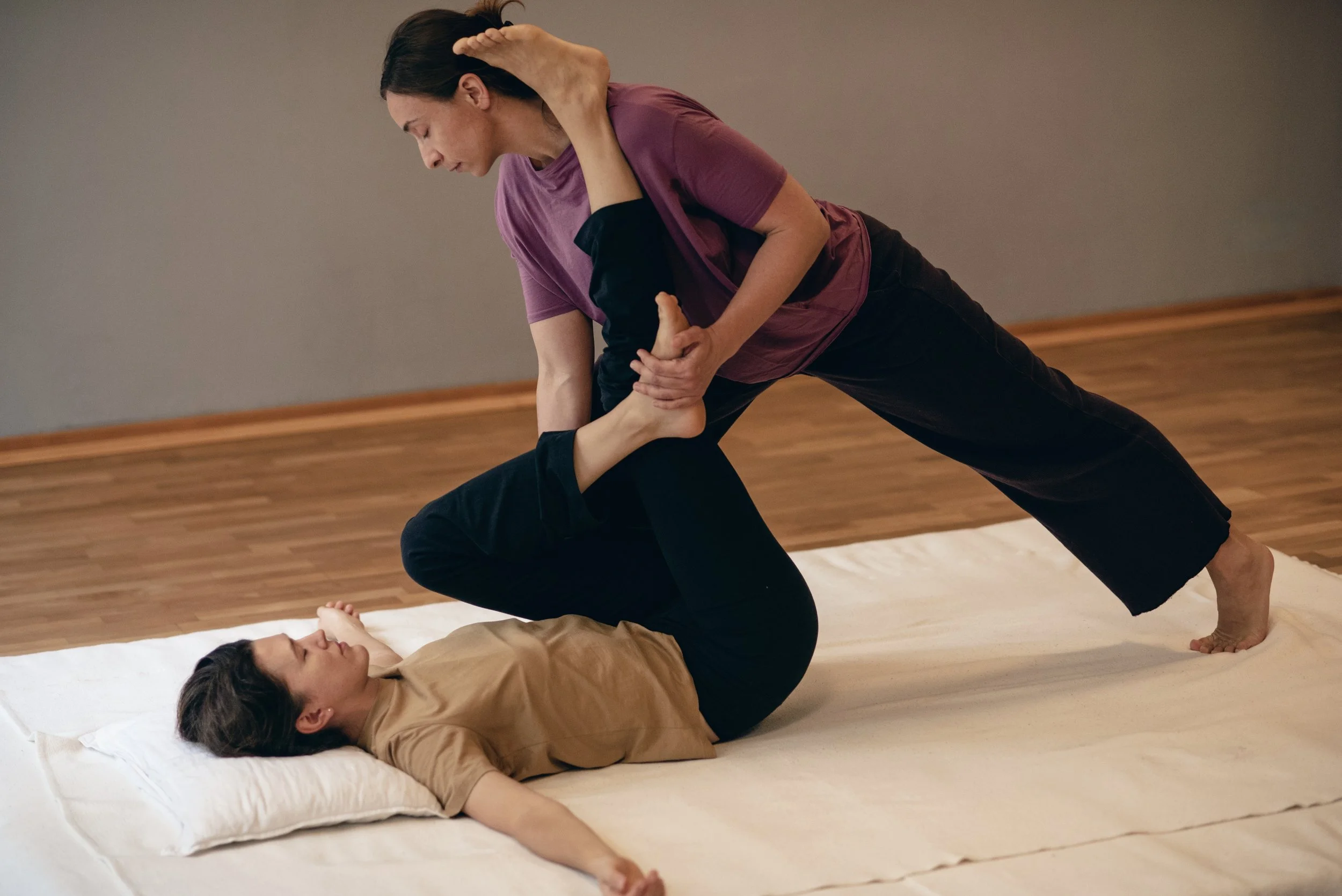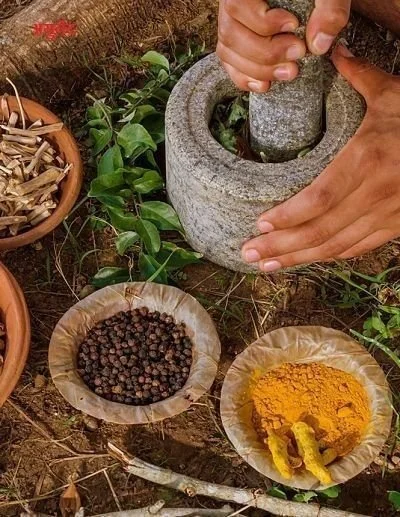
THAI MASSAGE, FROM TRADITION TO INNOVATION.
Thai massage, also known as Nuad Thai, Thai Yoga Massage or Thai bodywork is an ancient healing practice that originated over 2,500 years ago. Rooted in Indian Ayurvedic medicine and Yoga tradition, it travelled together with Buddhism to what we now call Thailand. Thai massage has been part of traditional Thai medicine ever since. Being a living method, handed down through generations mostly through oral tradition it has been influenced by Chinese medicine and indigenous Thai traditions and has a wonderfully broad and eclectic approach.
In massage schools across modern-day Thailand, a man called Jivaka Kumar Bhaccha is revered and honoured as the father of traditional Thai medicine. His name is mentioned in old Buddhist scriptures as he was the physician of the Sangha - community of monks- and the Buddha himself around 2500 years ago. Consequently, he became closely associated with what we call today Thai massage, practitioners still offering up prayers to him before each session.
The practice of Thai Massage
Traditional Thai massage, also known as Thai bodywork or Thai Yoga massage are all different labels to describe a highly physical, hands-on branch of Traditional Thai Medicine. Other branches include the use of herbs, herbal compresses or steam baths.
A fusion of Buddhist spiritual practice and Indian Ayurvedic bodywork, Thai massage combines Hatha Yoga techniques and the commitment of working with “loving kindness” which makes it essentially a meditative Metta practice. Working intuitively and withought judgment in this way supports the body’s natural inclination to heal itself.
There are two quite distinct styles of traditional massage that are practiced today in Thailand and across the world: northern style and southern style. Both approaches adhere to similar principles, but their emphasis is slightly different.
The northern style developed among farming communities that live in the hills of northern Thailand, and so the massage methods reflect their way of life by placing a particular emphasis on leg work and dynamic yoga-like stretches. It has a more gentle and relaxing approach compared with the southern style and the influence of ancient Indian practices is very strongly felt.
Southern style Thai massage, sometimes called Bangkok or Royal style, is known for its often stronger pressure and focused application of acupressure along the body's energy lines and the use of more body weight and leverage, including feet, knees, and elbows to stimulate blood flow and release blockages in the body's energy channels. This style is more invigorating and energising.
The centre of the southern style is the Bangkok temple of Wat Pho. The school within Wat Po is the first of its kind in Thailand to be officially recognized by the Ministry of Education. It offers professional courses in Thai traditional pharmacy, medication, midwifery, and massage. The school has a more “medical” approach and the use of herbal practices is extensive. As a result Thai herbal compress massage is very often used in conjunction with Thai massage. It involves wrapping a blend of dried or fresh herbs in a muslin cloth and steaming it until warm. The warm compress is then applied to the body, utilizing gentle pressure and circular motions, to release the herbs' healing properties into the skin and muscles. This technique combines the benefits of aromatherapy, thermal therapy, and herbal medicine.
Currently, both styles are combined, and each masseur tries to find their distinctive style. There are many other influences that enrich this continuously growing, living practice.
I personally had studied both Thai styles and other methods of bodywork, massage and neuro-somatic education. The ones that influenced the most my massage practice are Yumeiho and the Feldenkrais Method; Yumeiho placing a stronger emphasis on correcting posture and improving spinal alignment and the Feldenkrais Method focusing on altering nervous system patterns to change movement.
The Energy System
According to Eastern philosophy underlying Thai massage, the body is made up of an interconnecting web of energy lines through which Prana, or life energy, flows. Prana is the force that supports and maintains all the vital functions of the body-mind connexion. It permeates all life and sustains all living things. When this energy flows freely we can enjoy good mental, physical and spiritual health.
Just like in the Yoga tradition, Thai massage is based on the concept that a human being consists of more than just their physical body. It’s said that we are made up of five different layers, koshas. There’s the physical/gross body - anamaya kosha, the energy/breath body - pranamaya kosha, the memory body - manamaya kosha, the subconscious body - vijnanamaya kosha, and the all encompassing cosmic body - anandamaya kosha with which all the others are interconnected.
It is the pranamaya kosha, the energy body that we primarily work with in Thai massage and Yoga. There are thousands of nadis or sen energy lines and in Thai massage a selection of 10 lines, Sip Sen, has been made, which are all worked on during a session.
The concept of Sen can be translated with English concepts like conduit, channel, fibre, filament, narrow ridge, line. This encourages us to think of flow and movement through the body rather than specific anatomical structures.
Thai texts mention red, black and white Sen which correlate roughly with arteries, veins and nerves. However, the main Sen used in Thai massage seem to correlate most strongly with networks of myofascial tissue, which structural integrations call the anatomy trains. The lines for the most part follow the grooves in between muscles, connecting important insertion points to one another.
The main sen lines used in Thai massage, such as Sen Sumana, Sen Ittha, and Sen Pingkhala, tend to align with the deep front, superficial front, and superficial back lines of anatomy trains.
The principle of anatomy trains, developed by Tom Myers, focuses on the interconnectedness of myofascial tissue, viewing the body as a series of long, elastic chains. This framework emphasizes the importance of continuous lines of relationship, rather than individual muscles, which aligns with the concept of sen lines as pathways for energy flow.
In essence, the sen lines in Thai massage can be understood as functional pathways within the body's myofascial network, mirroring the principles of anatomy trains. This understanding can help Thai massage practitioners refine their techniques and better target specific areas of the body for therapeutic benefits.
Energy flows freely around a normal, functionally healthy body. Every second, you are consciously and unconsciously perceiving your environment and responding to the feelings and impulses that arise from your perceptions. Long-held tensions in muscles and connective tissues can result in such blockages. Breaks in the Sen can be caused by injuries such as sprains and tears in connective tissue.
In place of the non-specific ‘energy’, the correct term to use in Thai Massage is ‘Lom‘ or Lom Pran. This is similar to Chi in Chinese medicine and Prana in yogic systems. If this flow of Lom is in any way impeded by blockages or breaks in the Sen, you will experience less-than-optimum health.
The goal of Thai Massage is to correct the Lom imbalances by stimulating the affected Sen to activate the body’s natural healing process and thereby restore your full function and vitality.
Healing setting
A Thai massage session takes place in a quiet, private room with a floor tatami and thin mat or futon on top for optimal support. The client remains fully clothed throughout the entire session. There’s no use of oils or creams. Occasionally, the aid of warm herbal compresses or the healing vibrations of Tibetan singing bows if the client choses so.
The therapist will use their hands, feet, elbows, and knees to apply pressure along the body's energy lines. They will also incorporate yoga-like stretches and compressions to improve flexibility and alignment.
The intensity, pressure or any other techniques are adapted to the needs of each person; it can vary from a dynamic yoga-like stretching routine to a very soft, slow and minimalistic way of touch.
Pregnant women are also very welcomed and, of course, the treatment is tailored for their specific needs. Please inform the therapist of your condition beforehand!
Guidelines for clients
Choose clothing that covers your legs and arms, allows a full range of motion and doesn't restrict circulation, preferably natural fibres.
Avoid a heavy meal right before your session to prevent digestive discomfort.
Drink plenty of water in the hours leading up to your massage to help loosen muscles and prepare your body to flush out toxins.
Arrive early. Give yourself some time to relax and adjust to the environment before your session begins.
Let your therapist know about any injuries, medical conditions, or specific areas of concern you have.
Mute or turn off your phone to avoid distractions and fully immerse yourself in the experience.
Try to relax as much as possible during the session. Focus on your breath and let go of any tension.
Single sessions or packages
-
Thai massage is based on the belief that energy flows through the body along specific pathways called "sen". The therapist works to clear and balance these energy pathways to promote well-being.
The intensity, pressure or any other techniques are adapted to the needs of each person; it can vary from a dynamic yoga-like stretching routine to a very soft, slow and minimalistic way of touch.
Please inform your therapist about your needs and enjoy the process!
-
Thai massage is based on the belief that energy flows through the body along specific pathways called "sen". The therapist works to clear and balance these energy pathways to promote well-being.
The intensity, pressure or any other techniques are adapted to the needs of each person; it can vary from a dynamic yoga-like stretching routine to a very soft, slow and minimalistic way of touch.
Please inform your therapist about your needs and enjoy the process!
-
Thai massage is based on the belief that energy flows through the body along specific pathways called "sen". The therapist works to clear and balance these energy pathways to promote well-being.
The intensity, pressure or any other techniques are adapted to the needs of each person; it can vary from a dynamic yoga-like stretching routine to a very soft, slow and minimalistic way of touch.
Please inform your therapist about your needs and enjoy the process!
-
Thai massage is based on the belief that energy flows through the body along specific pathways called "sen". The therapist works to clear and balance these energy pathways to promote well-being.
The intensity, pressure and other techniques are adapted to the needs of each person, in this case pregnancy.
The prices and timeframes are the same with the regular session.
Please inform your therapist about your needs and enjoy the process!
-
Item description
-
Item description
-
Thai massage is based on the belief that energy flows through the body along specific pathways called "sen". The therapist works to clear and balance these energy pathways to promote well-being.
The intensity, pressure or any other techniques are adapted to the needs of each person; it can vary from a dynamic yoga-like stretching routine to a very soft, slow and minimalistic way of touch.
Please inform your therapist about your needs and enjoy the process!
Prices:
120 min x4 - 500 euro
90 min x4 - 350 euro
All packages are valid 6 months starting from the date of purchase.
-
Thai massage is based on the belief that energy flows through the body along specific pathways called "sen". The therapist works to clear and balance these energy pathways to promote well-being.
The intensity, pressure or any other techniques are adapted to the needs of each person; it can vary from a dynamic yoga-like stretching routine to a very soft, slow and minimalistic way of touch.
Please inform your therapist about your needs and enjoy the process!
Prices:
120 min x10 - 1000 euro
90 min x10 - 750 euro
All packages are valid 6 months starting from the date of purchase.
-
Item description
Workshops and individual sessions
Optimal alignment, posture and organisation. A workshop for bodyworkers and massage therapists
To be announced..
Foundations of Thai Massage. For beginners.
The course takes place when the group is formed - please contact me if interested
Individual mentoring sessions.



